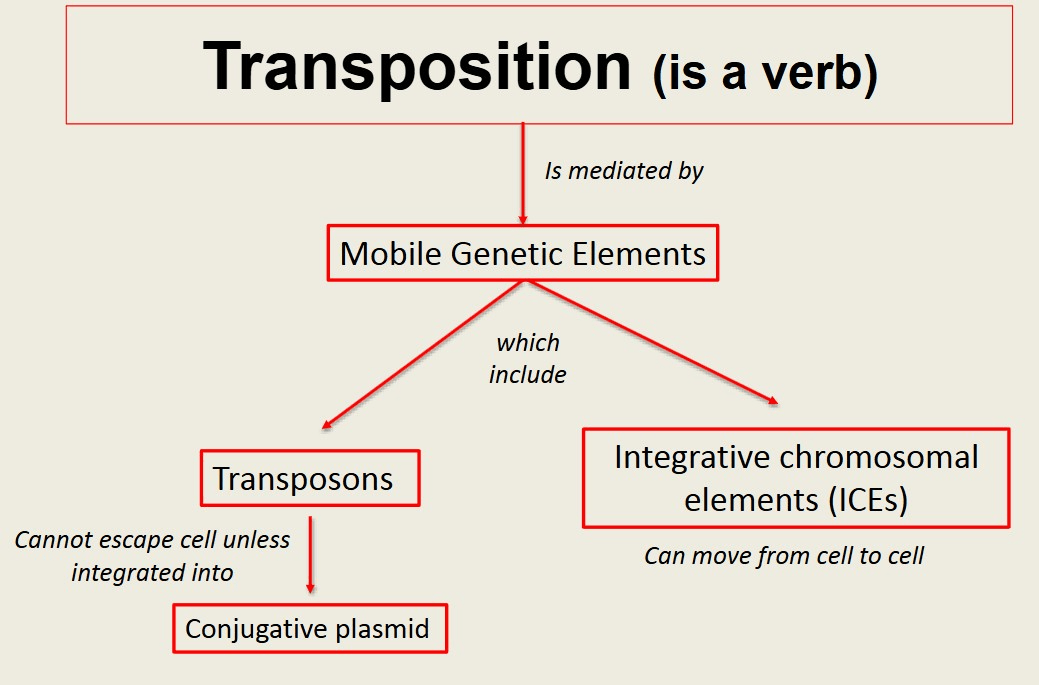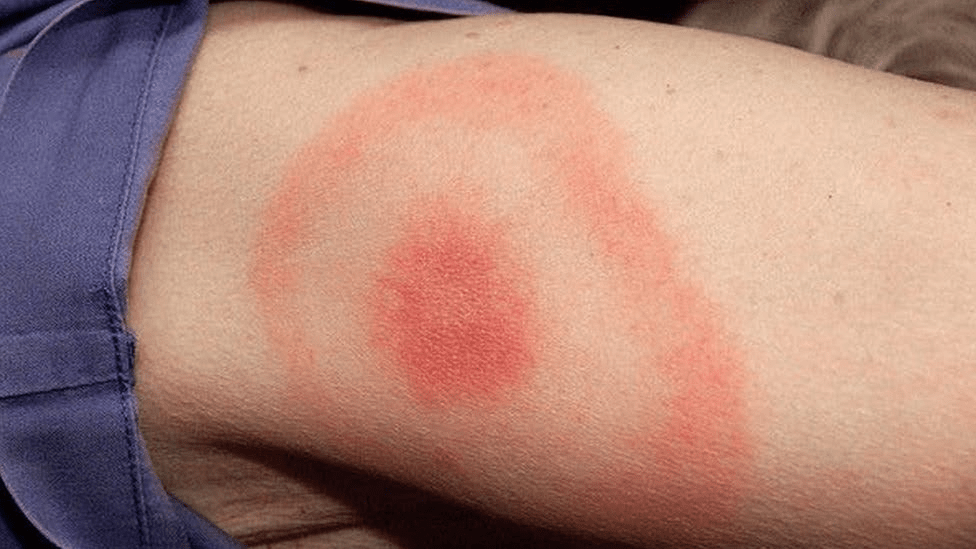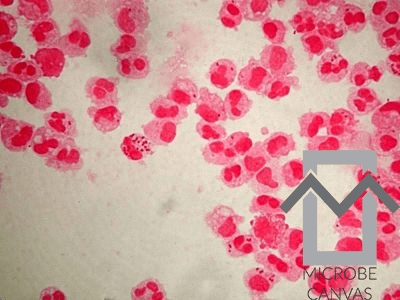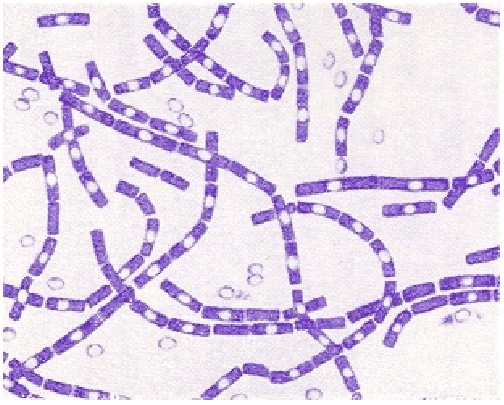A Bacteria known to cause pneumonia with non-productive cough.
Mycoplasma pneumoniae (by way of ciliostasis)
The bacteria that most commonly causes osteomyelitis in patients with sickle cell disease.
Salmonella (due to high motility/flagella)
A mobile gene element that can only be transferred from one bacteria to another by conjugated plasmid.

A 12 year old boy visits the doctor complaining of diarrhea, lower abdominal pain, and abdominal tenderness. He recently visited the state fair with his parents who also report similar symptoms. His stool sample is gram stained and reveals gram negative rods. Triple sugar iron test is positive. What is the best treatment plan for this patient?
Fluids and electrolytes. Do not give antibiotics or anti-motility agents for salmonellosis.
The species of Bacteria that most commonly causes UTI.
E. Coli. (specialized E. coli with fimbriae that help cling to urinary tract). This bacterial subspecies is called UPEC (Uropathogenic E. Coli).
A bacteria best grown at 42 degrees C.
Campylobacter, a gram-negative, oxidase positive, comma shaped (curved rod) bacteria that causes bloody diarrhea.
Alcohol, acid, and gases.
A bacteria known to cause "Rice water diarrhea"
Vibrio Cholerae
The bacteria that causes the condition pictured below

Borrelia (a type of spirochete)
A selective medium (agar) for gram-negative bacteria, differentiating them by lactose metabolism.
MacConkey Medium (agar)
The most widely recognized gram negative dipplococci.
Neisseria, ex. Neisseria meningitidis

A bacteria commonly characterized as "Gram positive, catalase positive, spherical shaped clusters."
Staphylococcus
The three enzymes that help bacteria survive excessive ROS.
Catalase, Superoxide dimutase, and peroxidase.
The three types of bacteria that can form endospores (sporulation).
Bacillus, Clostridium, and Clostridioides. note: Spores are highly resistant, dormant structures of bacteria that allow them to survive environments that would otherwise kill them.
A bacteria commonly characterized as a "Gram-positive boxcar."
Bacillus anthracis (note: special virulence factor of this bacteria is that the capsule is a protein rather than polysaccharide)

Bacteria that can only ferment lack this enzyme
Catalase.
Reference from metabolism lecture. "Anaerobes and bacteria that ONLY ferment are catalase negative, ex. Streptococcus. Fermenters that grow aerobically use peroxidase to detoxify ROS. Not every fermenter is an obligate anaerobe.